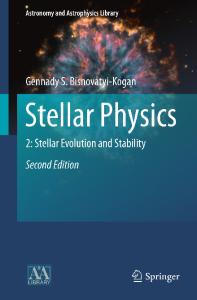Stellar Systems, Galaxy, Extragalactic Objects, Cosmology
- PDF / 50,517,989 Bytes
- 236 Pages / 504.57 x 720 pts Page_size
- 82 Downloads / 280 Views
151 Stellar Systems (Kinematics, Dynamics) 151.001
Modelling the steUar intensity and radial velocity fields in triaxial galaxies by sums of Gaussian functions. G. Monnet, R. Bacon, E. Emsellem. Astron. Astrophys., Vol. 253, No.2, p. 366- 373 (Jan 1992). The authors show that if the spatial light intensity and angular velocity of a cylindrically-rotating elliptical galaxy are both represented by sums of centered Gaussian functions, constant on homothetic triaxial ellipsoids, then the observed isophotes and iso-radial velocities, for an arbitrary line of sight and with a point-spread function also represented by a sum of Gaussians, can be derived from their spatial counterparts by simple analytical formulae. The inverse problem of deriving the spatial parameters from the observed ones is studied, and threedimensional deconvolution of the surface brightness and the radial velocity field are obtained, when the point-spread function is a single Gaussian. 151.002 Types of escapes in a simple Hamiltonian system. G. Contopoulos, D. Kaufmann. Astron. Astrophys., Vol. 253, No.2, p. 379- 388 (Jan 1992). When the energy of the orbits in a Hamiltonian system is larger than the escape energy many (but not all) orbits escape. The proportion of escaping orbits and the direction of escape depend on the topology of the asymptotic surfaces of the Lyapunov periodic orbits (orbits at the throats of the various escape channels). The authors study the topolqgy c;if these asrmptotic surfaces in the Hamiltonian H = 1/2 (x 2 + y2 + x 2 +y )-ex 2y 2 , which has 4 escape channels. They find the "basins" of escape towards different directions, and of fast and slow escape for various values of the perturbation parameter e. These basins are either broad regions, or elongated bands, spiralling around the center. As e decreases and approaches the escape perturbation e.,•. the proportion R of fast escapes decreases. The authors find an empirical formula between R and the difference of perturbations (e-e.,.). 151.003 Relaxation-driven binary mergers. S. Gelato, D. F. Chernoff, I. Wasserman. Astrophys. J., Vol. 384, No.1, p. 15-34 (1 Jan 1992). Through N-body integrations, the authors study the merging of two subclusters in the limit where relaxation effects are significant. Relaxation can speed up the orbital decay relative to the prediction of the standard dynamical friction formula, essentially by increasing the density of halo particles. Not only is the numerically determined decay time 4 - 40 times shorter than the predicted value, but its scaling with the distance between the clumps also disagrees with the standard prediction. The authors show that the effect can be accounted for through a combination of relaxation-induced halo growth and ordinary dynamical friction, and they present a semianalytic model that accounts for the main features of the simulations. The results may be relevant to the formation history of some rich clusters. The semianalytic model is used to estimate the minimum number of particles required for relaxation to have neg











